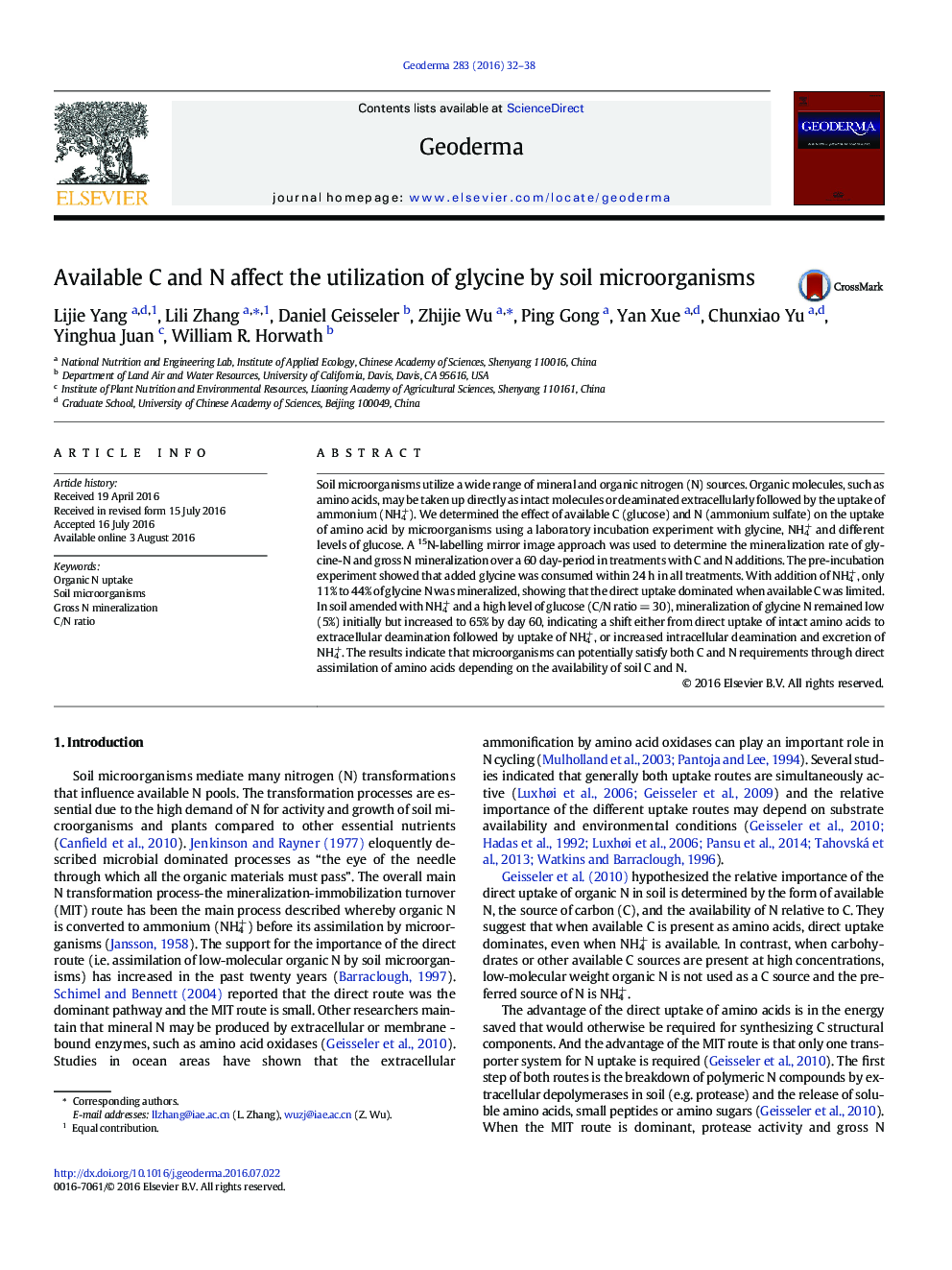| Article ID | Journal | Published Year | Pages | File Type |
|---|---|---|---|---|
| 4572847 | Geoderma | 2016 | 7 Pages |
•In the presence of ammonium, most glycine was taken up as intact molecules.•Glycine-N mineralization was increased in the presence of ammonium and glucose.•Glycine mineralization increases as carbon availability increases.•Gross N mineralization rates may underestimate N availability to microorganisms.
Soil microorganisms utilize a wide range of mineral and organic nitrogen (N) sources. Organic molecules, such as amino acids, may be taken up directly as intact molecules or deaminated extracellularly followed by the uptake of ammonium (NH4+). We determined the effect of available C (glucose) and N (ammonium sulfate) on the uptake of amino acid by microorganisms using a laboratory incubation experiment with glycine, NH4+ and different levels of glucose. A 15N-labelling mirror image approach was used to determine the mineralization rate of glycine-N and gross N mineralization over a 60 day-period in treatments with C and N additions. The pre-incubation experiment showed that added glycine was consumed within 24 h in all treatments. With addition of NH4+, only 11% to 44% of glycine N was mineralized, showing that the direct uptake dominated when available C was limited. In soil amended with NH4+ and a high level of glucose (C/N ratio = 30), mineralization of glycine N remained low (5%) initially but increased to 65% by day 60, indicating a shift either from direct uptake of intact amino acids to extracellular deamination followed by uptake of NH4+, or increased intracellular deamination and excretion of NH4+. The results indicate that microorganisms can potentially satisfy both C and N requirements through direct assimilation of amino acids depending on the availability of soil C and N.
